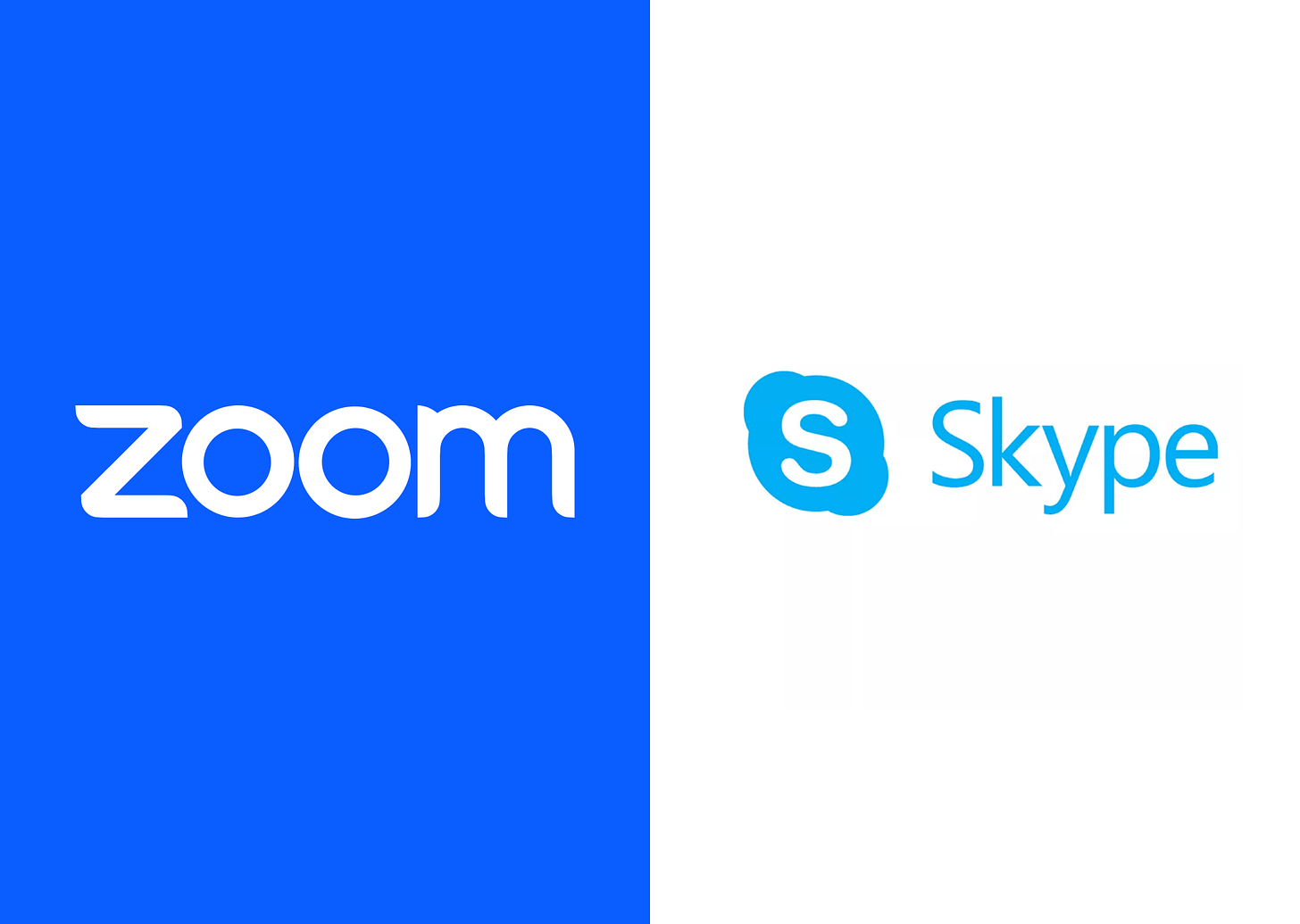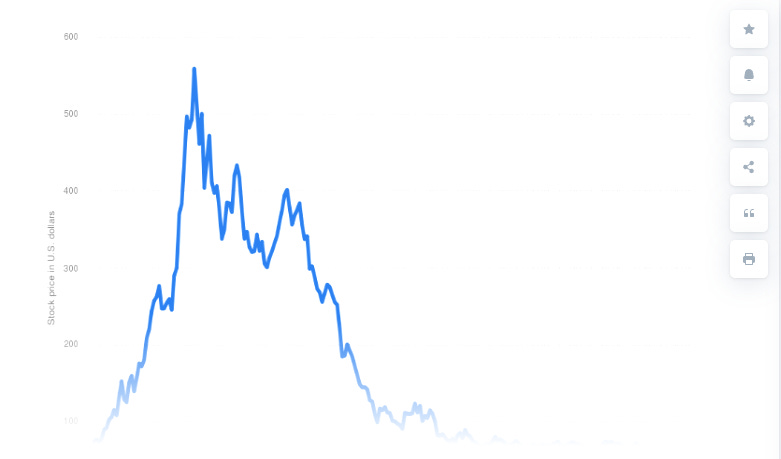The Zoom vs. Skype Design War and What 2020 Revealed About Product Resilience
How Microsoft's beloved giant fell to a Silicon Valley upstart and what it reveals about the ruthless psychology of user experience
Have you ever thought about why Skype was shut down? You'll probably say, "Well, Microsoft has Teams." And that's true I love Teams, it's very good for video conferencing. But Teams isn't familiar or culturally influential like Skype was.
So why did such a notable brand get shut down while Zoom, a newcomer during the pandemic, gained so much market attention? Even though Skype had decades of expertise, it still lost. Microsoft had announced that Skype would officially retire on May 5, 2025, marking the end of the once-dominant video-calling platform, after Microsoft, which had acquired the messaging and calling app 14 years prior, decided to retire it from active duty to double down on Teams.
When Familiarity Becomes Friction
Skype wasn't just software it was a verb. "Skype me" entered our vocabulary the way "Google it" did. The platform pioneered consumer video calling, connecting families across continents and enabling the first generation of remote workers. Yet when the world desperately needed video conferencing in 2020, this cultural icon fumbled the biggest opportunity in its history.
The numbers tell a brutal story of cultural relevance versus product execution.
Research-Backed Reality
The pandemic created the ultimate stress test, and the results were devastating for Skype:
Zoom's Explosive Growth:
Zoom was downloaded in a record-breaking fashion across the world: 14X more in America compared to its fourth-quarter weekly average in 2019, 55X more in Italy, 22X more in France, and 20X more in the UK
For iPhones, Zoom downloaded 30X than the previous quarter
Zoom truly entered the public consciousness during the coronavirus pandemic of 2020. It was to Zoom that users across the world turned to stay in touch during the lockdown
Market Dominance Shift:
Zoom dominated the market with 50% share while Microsoft Teams reached 75 million daily active users
The highest growth of 74.64% in the number of Zoom employees was recorded in the fiscal year 2021. This was an effect of a rise in Zoom usage during the pandemic in the year 2020
Stock Market Validation:
While the price has increased steadily throughout 2020, a positive announcement regarding the efficiency of a COVID-19 vaccine made on November 9, 2020, resulted in Zoom's share price falling from 500.11 U.S. dollars to 403.58 U.S. dollars showing just how tied Zoom's success was to the pandemic reality
The Design Philosophy Divide
Here's where the story gets interesting. Skype had everything: brand recognition, Microsoft's resources, and a 17-year head start. So, what went wrong?
The Paradox of Feature Accumulation: Skype tried to be everything messaging, calling, file sharing, screen sharing, group calls, business features, consumer features. Over nearly two decades, it accumulated features like digital barnacles, each one making the core experience slightly more complex.
Zoom's Laser Focus: Zoom is a video conferencing app, geared towards business usage. It was founded in 2011 by Eric Yuan, and launched in January 2013. Unlike Skype's evolution, Zoom was born with one mission: make video meetings effortless. Every design decision served this single purpose.
When Panic Meets Product
When schools shut down and offices went remote overnight, millions of first-time users needed video conferencing to work immediately. This wasn't a gradual adoption this was panic-driven necessity.
The Grandmother Test: Could a 70-year-old grandmother join her first family video call without technical support? Zoom passed this test; Skype often failed it. The difference wasn't in features it was in the elimination of friction at every critical moment.
The Teacher's Dilemma: Could a teacher manage 30 kids in a virtual classroom while learning the platform themselves? Zoom's design anticipated this chaos; Skype's legacy architecture fought against it.
Microsoft's Strategic Blind Spot
On July 31, 2021, Microsoft retired Skype for Business Online. This retirement was announced in July 2019 to give customers two years advance notice to plan their upgrades to Microsoft Teams. Microsoft correctly identified that Teams was superior for business use, but they misunderstood why consumers flocked to Zoom instead of consumer Skype.
The issue wasn't that Teams was bad Teams is excellent for enterprise collaboration. The issue was that Skype had become a victim of its own success, accumulating design debt over 17 years of trying to serve every possible use case.
Design Debt is Technical Debt
Skype's death teaches us that design debt compounds like technical debt. Every compromised user experience, every additional click, every moment of confusion adds up. When crisis hits, users don't have patience for accumulated friction.
Zoom meeting statistics reveal that the solution has registered 3.3 trillion annual meeting minutes a staggering number that represents billions of moments where the product simply worked as expected.
Cultural Impact vs. Product Impact
Skype gave us the concept of video calling, but Zoom gave us "Zoom fatigue"the recognition that video meetings had become so seamless and prevalent that we now worried about having too many of them. The cultural conversation shifted from "Can we make video calling work?" to "Should we be in this meeting at all?"
This shift represents the difference between pioneering a category and perfecting an experience. Skype pioneered; Zoom perfected.
The Strategic Takeaway
Microsoft confirmed earlier this year that it officially retired Skype in May and consolidated its consumer communication services into Microsoft Teams. This decision acknowledged a fundamental truth: sometimes, starting fresh beats trying to renovate.
For product teams, the Skype vs. Zoom story isn't just about video conferencing it's about the danger of feature creep, the importance of crisis-ready design, and the reality that brand recognition can't compensate for user experience friction.
When the world needed video conferencing most, the winner wasn't the platform with the most features, the biggest brand, or the longest history. It was the platform that got out of its users' way and let them focus on what mattered: connecting with other humans in a time of unprecedented isolation.
Research Sources:
Sometimes the most familiar path leads to obsolescence. The future belongs to those who design for the moment when everything falls apart.




